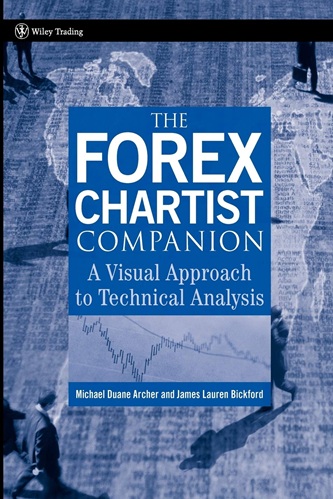Articles
Six Tips To Successful Daytrading By Alex Wasilewski

Daytrading’s not a profession for the weak, that’s for sure. Try these tips to help you trade. It’s a classic catch-22 in a recessionary job market: People looking to enter a new profession find they cannot get in without at least some relevant experience, yet they have little chance of gaining any experience because employers are eliminating or outsourcing entry-level positions. One notable exception to this is daytrading, which is the practice of buying and selling a stock within the same day. Anyone with a few thousand dollars in seed money can set up a short-term trading account and compete for profits alongside huge investment firms and seasoned, multimillionaire traders. The only credential you need is a positive account balance to make tomorrow’s first trade.
Daytrading is also inherently adversarial: The strong make a profit by taking money from the weak. Inexperienced traders can (and do) lose thousands of dollars in a matter of minutes as the stock market soars and dives. For every beginning daytrader who goes on to achieve long-term profitability, about nine others fail. Although there are no shortcuts or sure-fire formulas for successful daytrading, some of the most common pitfalls can be avoided by following six basic tips designed to help traders develop more consistent and professional practices.
1. PREPARE YOUR MIND
What you believe about yourself is the most powerful predictor of what you can achieve in daytrading. A world-class athlete does not wait until he wins that first Olympic medal to start thinking and training like a champion. Likewise, great traders start to envision themselves as being successful before they ever make their first profitable trade of the day.
When he or she loses money, a successful trader can mentally contradict that fact by picturing him- or herself achieving the next good trade. Great traders don’t allow the situation — their last losing trade — to create or reinforce a negative belief. Instead of saying, “I always get stopped out on my trades,” try rephrasing that statement in past tense: “I had a problem with setting my stops today, but I’ll do better tomorrow.”
Another technique for developing a success mindset is to think about breaking your own “Olympic record” with every trade. If your highest profit on any one trade has been 10 points, resolve to keep trading until you earn 12 points. Picture yourself reaching that goal. More than any technical trading setup, a success-driven mindset helps traders stave off the fear that can leave them stuck in a bad trade or afraid to hold onto a good one.
2. ALWAYS BE AWARE OF THE RISK
While this might seem to contradict the notion of a success-driven mindset, deciding in advance how much monetary risk you are willing to take in the course of a day’s trading — or even one particular trade — helps eliminate much of the uncertainty. Many novice traders, and even some experienced professionals, are not aware of their risk level because they haven’t set a firm stop-loss point prior to entering a trade. Placing a stop keeps a trader grounded in the fact that losses do occur, and they need to be prepared for them.
Another helpful barometer in risk awareness is being accountable to at least one other person — a fellow trader, spouse, or personal coach — for the overall health of your trading practices. You might ask that person to review your trade records, help set limits on how much money you can afford to lose in any one day, or make sure you are consistently setting stop-loss points on your trades.
3. PLAN AHEAD
Have your technical trading setups planned in advance. You cannot tell what the market is going to do, but you should know what you are going to do when the market moves.
One of my favorite trades is taking a position with the trend on a 15-minute chart when a trigger forms on a three-minute chart. For example, if the 15-minute trend is down, I will take a short when a sell trigger forms at the end of a three-minute chart rally. The person reviewing your trades should be able to point out how many trigger trades you took or failed to take.
Suggested Books and Courses About Day Trading
BCFX Forex Course By Brandon Carter
Original price was: $918.00.$21.42Current price is: $21.42.4. TRADE WITH THE TREND
Most daytrading gurus and systems tout the slogan of “The trend is your friend” (or some variation thereof) because it reflects a simple truth. Regardless of the particular time frame in which a person seeks to make trades for a profit, some kind of trend typically exists. If I buy into the market and take a profit of three ticks in five minutes, the market had to show a three-tick uptrend. While analysts may stake their reputation on being able to predict the precise turning point in a market, most daytraders who are out to make money will trade in the direction that the crowd is going.
Despite the conventional wisdom, some traders insist on going for the countertrend, trying to buy a sharply falling market or short a rapidly rising one because they think the market will change direction once they are in. If that is your preference, I recommend trading counter the trend on a shorter time frame.
I trade in the direction of the 15-minute trend. For timing, I wait until the three-minute chart has completed a move opposite to the trend of the 15-minute chart (also called “retracements” to the greater time frame). That way, you are more likely to benefit from at least some of the trends occurring on a longer time frame.
5. KEEP DETAILED RECORDS
Experience is paramount in developing into a consistently successful daytrader. It is easy for traders to get over-whelmed by the flurry of activity and miss opportunities to learn from their past trades unless they record important details, such as:
- Why did I go long on this trade and short on that one?
- How many indicators was I using for this trade, and which ones when it rolled back over?
- What times of the day do I tend to make most of my winning trades? When do I tend to lose more often?
- What was I thinking or feeling at various times of the day and how did those thoughts and emotions influence my trading decisions?
All traders grow by adapting; they shed unprofitable strategies and tactics over time to focus on other approaches that have been proven to work. Each afternoon after finishing their trades, the best traders can view their losses as a learning opportunity and determine their positive intentions for the next trading day.
6. PROSPER FROM PANIC
Short-term trading is essentially an adversarial, zero-sum game of people betting against each other. As traders gain experience and evaluate their track record over time, they learn to recognize situations in the market that make a novice act out of panic or greed because that is what they did when they were first starting out.
Wait for a move in the market that surprises you, such as when it is going long and rallying. Inexperienced traders who have not entered that market yet will be itching for a piece of those profits. Newbies tend to chase a move when it is just about over. You should prepare to trade when the market rapidly moves counter to its recent behavior, which in this case would be a sharp plunge that indicates the newbie traders are trapped.
When an otherwise quiet market makes a sudden large move, trade in the direction of that move. A steadily rising market should be shorted when it makes a sudden, large drop, but consider trading long when you see a large, unexpected rise. Look at the price levels where lots of trading took place before the sudden move (a congestion area or the price range formed by a price bar with a much larger range than the recent past). As the market approaches this area, it gets the attention of the trapped traders who will try to exit with a less dramatic loss.
When the market does not quite reach those price levels and begins to move away, the lost opportunity again pushes the trapped traders’ panic buttons. I would enter the trade with the idea that in a few moments the trapped traders’ market orders will increase the likelihood of my trade becoming profitable. For example, a rising market culminates with increased volume, a sell trigger forms, and the next bar or two is sharply lower. Late buyers are trapped.
I will wait until the market slowly rallies to the 89-period moving average on a 133-tick chart and short at that price level. That trade works more than 80% of the time.
SOME FINAL THOUGHTS
Succeeding as a professional trader requires dedication, patience, and a high tolerance for being wrong — namely, accepting that sometimes the market is going to take your money. I spent four years and lost about $38,000 learning the ropes of this volatile profession before I started consistently following the principles outlined here. The good news for traders who manage to survive the initial grueling months or years of paying their dues is that there will always be a new crop of novice traders making the same mistakes and giving you opportunities to make winning trades.
Remember that consistently successful traders do not have to win all the time, just over time. There will always be more to learn and these initial tips should only be considered a starting point for the journey. At the very least, they should help you smooth out some of the turbulence inherent in daytrading and build confidence to stay in the game.
Alex Wasilewski is a daytrading coach, entrepreneur, pilot, and cofounder of PureTick.com.




